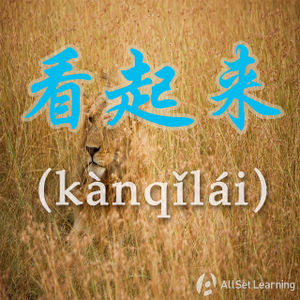Difference between revisions of "Appearance with "kanqilai""
| Line 1: | Line 1: | ||
{{Grammar Box}} | {{Grammar Box}} | ||
| + | |||
| + | One of the most common ways to express "it looks like" is to use 看起来. | ||
== Structure == | == Structure == | ||
| − | + | Just put 看起来 in front of after the subject and before the verb, as follows: | |
<div class="jiegou"> | <div class="jiegou"> | ||
| Line 24: | Line 26: | ||
==See also== | ==See also== | ||
| + | |||
| + | * [[Result complement "-qilai"]] | ||
| + | * [["It seems" with "haoxiang"]] | ||
| + | * [[Further Uses of Resultative Complement "qilai"]] | ||
== Sources and further reading == | == Sources and further reading == | ||
| − | === | + | === Websites === |
| + | |||
| + | * [http://chinesepod.com/lessons/using-%E7%9C%8B-kan-and-%E7%9C%8B%E8%B5%B7%E6%9D%A5-kan-qilai Using 看 (kàn) and 看起来 (kàn qilai)] | ||
[[Category:B1 grammar points]] | [[Category:B1 grammar points]] | ||
Revision as of 08:19, 20 February 2013
-
Level
-
Similar to
-
Used for
-
Keywords
One of the most common ways to express "it looks like" is to use 看起来.
Structure
Just put 看起来 in front of after the subject and before the verb, as follows:
Subject + 看起来 + Adjective
The subject can be omitted, in which case 看起来 can be followed with a whole statement.
Examples
- 这 个 看 起来 很 漂亮。
- 他 看 起来 很 友好。
- 这 些 食物 看 起来 很 好吃。
See also
- Result complement "-qilai"
- "It seems" with "haoxiang"
- Further Uses of Resultative Complement "qilai"
Sources and further reading
Websites



